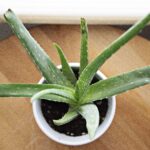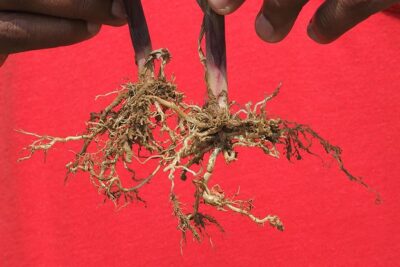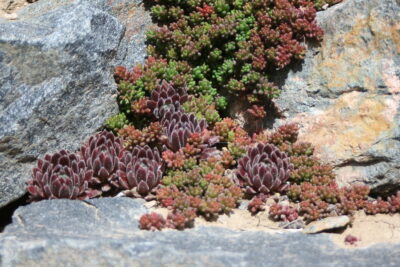
Succulents: Growing from Seeds or Cuttings?

Succulents have become increasingly popular in recent years, both as houseplants and in outdoor gardens. Known for their ability to store water in their thick leaves, succulents come in a wide variety of shapes, sizes, and colors, making them a favorite choice for plant enthusiasts. One common question that arises when it comes to growing succulents is whether it is better to grow them from seeds or cuttings.
We will explore the advantages and disadvantages of growing succulents from seeds and cuttings. We will discuss the process of growing succulents from seeds, including the necessary conditions for germination and the potential challenges. We will also delve into the process of propagating succulents from cuttings, explaining the various methods and best practices for success. By the end of this article, you will have a better understanding of the pros and cons of each approach, allowing you to make an informed decision on how to grow your own succulents.
- Both seeds and cuttings can be used to grow succulents
- Growing from seeds requires patience and time
- Cuttings are a quicker and more reliable method
- Seeds allow for a wider variety of succulent species
- Cuttings ensure that the new plant will be identical to the parent plant
- Seeds require specific conditions for germination
- Cuttings need to be properly prepared and rooted
- Seeds can be more affordable than buying mature plants
- Cuttings allow for propagation from existing plants
- Both methods have their own advantages and disadvantages
- Frequently Asked Questions
Both seeds and cuttings can be used to grow succulents
When it comes to growing succulents, there are two main methods that gardeners can choose from: using seeds or cuttings. Both methods have their advantages and disadvantages, so it ultimately comes down to personal preference and the specific needs of your succulents.
Using Seeds
Growing succulents from seeds can be a rewarding and exciting experience. It allows you to start from scratch and witness the entire life cycle of your plants. Here are some key points to consider when using seeds:
- Variety: Growing succulents from seeds offers a wide range of options as you can choose from various species and hybrids. This gives you the opportunity to create a diverse collection.
- Patience: Growing succulents from seeds requires patience as the germination process can take weeks or even months. It's important to provide the right conditions, such as proper temperature and moisture levels, to ensure successful germination.
- Cost: While seeds are generally more affordable than buying established plants, keep in mind that it may take some time for your succulents to reach maturity and develop into full-grown plants.
Using Cuttings
Using cuttings is another popular method for propagating succulents. It involves taking a piece of an existing succulent plant and encouraging it to grow roots. Here are some advantages and considerations when using cuttings:
- Quick Results: Compared to growing from seeds, using cuttings can yield faster results. Once the cutting develops roots, it can grow and establish itself more efficiently.
- Genetic Cloning: By using cuttings, you can essentially clone the parent plant, ensuring that the new succulent will have the same characteristics and traits.
- Availability: Cuttings are readily available, especially if you have friends or fellow gardeners who are willing to share their excess plants. This can be a cost-effective way to expand your succulent collection.
Ultimately, whether you choose to grow succulents from seeds or cuttings, both methods can be successful and enjoyable. It's important to consider factors such as time, variety, and availability when deciding which method is best for you. Whichever route you choose, the end result will be a beautiful and thriving succulent garden.
 Gentle Techniques for Removing Succulent Offshoots
Gentle Techniques for Removing Succulent OffshootsGrowing from seeds requires patience and time
When it comes to growing succulents, there are two main methods you can choose from - growing from seeds or cuttings. While both methods have their advantages, growing from seeds requires a bit more patience and time.
If you decide to grow succulents from seeds, you will need to start by obtaining the seeds either from a nursery or by harvesting them from mature plants. Once you have the seeds, it's important to create the right conditions for germination.
Firstly, you will need a well-draining soil mix that is specifically designed for succulents. This will prevent the seeds from becoming waterlogged, which can lead to rotting. Additionally, providing a warm and humid environment will help to promote successful germination.
It's important to note that succulent seeds can take a while to germinate, sometimes ranging from a few days to several weeks. Patience is key during this process, as it may take some time before you see any visible signs of growth.
Once the seeds have germinated, you will need to provide them with adequate light. Placing them near a sunny window or using artificial grow lights can help to ensure that the seedlings receive enough light to grow properly.
As the seedlings continue to grow, you will need to gradually acclimate them to outdoor conditions if you plan on eventually transferring them to your garden or containers. This process, known as hardening off, involves gradually exposing the seedlings to outdoor temperatures and sunlight over a period of a few weeks.
 Learn How to Successfully Propagate Your Black Rose Succulent
Learn How to Successfully Propagate Your Black Rose SucculentOverall, growing succulents from seeds can be a rewarding and fulfilling experience. However, it's important to remember that it requires patience and time before you can enjoy the fully grown plants in all their glory.
Cuttings are a quicker and more reliable method
Cuttings are a popular and effective method for propagating succulents. Not only is it a quicker way to grow new plants, but it also ensures a higher success rate compared to growing from seeds.
When you take a cutting from a mature succulent, you are essentially cloning the plant. This means that the new plant will have the exact same traits and characteristics as the parent plant. This is ideal if you want to maintain the specific features of a particular succulent variety.
There are two types of cuttings commonly used for succulents: stem cuttings and leaf cuttings. Stem cuttings involve snipping off a section of the stem, typically with a few leaves attached. Leaf cuttings, on the other hand, involve removing a leaf from the parent plant and allowing it to develop roots.
Once you have taken your cutting, it is important to let it callus over before planting it. This helps to prevent rot and disease. To do this, leave the cutting in a cool, dry place for a few days until the cut end forms a dry, hardened layer.
When planting your succulent cutting, it is crucial to use well-draining soil. Succulents prefer soil that allows excess water to drain away quickly, as they are prone to root rot if left sitting in waterlogged soil. A mixture of sandy soil or cactus mix is ideal for succulents.
 Step-by-Step Guide: How to Successfully Propagate Succulents at Home
Step-by-Step Guide: How to Successfully Propagate Succulents at HomeAfter planting, it is important to provide your cutting with the right conditions to encourage root growth. Place it in a bright location with indirect sunlight and avoid direct exposure to harsh midday sun. Keep the soil lightly moist but not overly wet to prevent rot.
Within a few weeks to a couple of months, depending on the type of succulent, your cutting should start developing roots and new growth. It is essential to be patient and not disturb the cutting during this period, as it needs time to establish itself.
Overall, growing succulents from cuttings is a reliable and efficient method. It allows you to reproduce your favorite succulents and expand your collection with ease. So, if you're looking for a quick and successful way to propagate succulents, cuttings are the way to go!
Seeds allow for a wider variety of succulent species
When it comes to growing succulents, there are two popular methods: growing from seeds or from cuttings. While both methods have their advantages, growing succulents from seeds allows for a wider variety of species to choose from.
When you opt to grow succulents from seeds, you open up a world of possibilities. There are countless succulent species and varieties available in seed form, ranging from the common ones to the rare and exotic. This means that you can experiment with different colors, shapes, and sizes of succulents in your collection.
Not only do seeds offer a greater variety of succulent species, but they also allow you to experience the joy of watching your plants grow from the very beginning. It can be incredibly rewarding to witness the transformation from a tiny seed to a mature succulent plant, nurturing it along the way.
Furthermore, growing succulents from seeds gives you the opportunity to develop your gardening skills. It requires patience, attention to detail, and knowledge of the specific requirements of each species. This hands-on approach allows you to learn and understand the intricacies of succulent growth, making you a more knowledgeable and confident gardener.
 The Cause of Tall Growth and Limited Spreading in Succulents
The Cause of Tall Growth and Limited Spreading in SucculentsHowever, it's important to note that growing succulents from seeds can be a longer and more challenging process compared to propagating from cuttings. Seeds can take several weeks or even months to germinate, and the success rate may vary depending on the species and environmental conditions. It requires careful monitoring of moisture levels, temperature, and proper seedling care.
If you are looking to expand your succulent collection and enjoy the journey of nurturing plants from the very beginning, growing succulents from seeds is a fantastic option. It offers a wide range of species to choose from and allows you to develop your gardening skills. However, if you prefer a quicker and more reliable method, propagating succulents from cuttings might be a better choice. Ultimately, the decision depends on your preferences, patience, and level of gardening expertise.
Cuttings ensure that the new plant will be identical to the parent plant
When it comes to propagating succulents, there are two main methods: growing from seeds or using cuttings. Both methods have their own advantages and it ultimately depends on your preference and the specific succulent you are working with. In this article, we will focus on the benefits of using cuttings to grow succulents.
Why choose cuttings?
One of the main advantages of using cuttings is that it ensures the new plant will be identical to the parent plant. This is because cuttings are taken from a mature succulent and will retain all the same genetic qualities as the parent. If you have a favorite succulent with unique characteristics, using cuttings is the way to go to ensure you can replicate those traits in the new plant.
1. Easy and quick:
Growing succulents from cuttings is relatively easy and quick compared to starting from seeds. You don't have to worry about germination or waiting for the seeds to sprout. With cuttings, you can simply take a piece of the succulent, allow it to callus over, and then plant it in well-draining soil. In a matter of weeks, you will see roots forming and a new plant emerging.
 Guide: How to Successfully Propagate an Ogre Ear Succulent
Guide: How to Successfully Propagate an Ogre Ear Succulent2. Higher success rate:
When it comes to succulents, using cuttings generally has a higher success rate compared to growing from seeds. Succulent seeds can be finicky and require specific conditions to germinate. On the other hand, cuttings have a higher chance of rooting and establishing themselves as new plants. This makes cuttings a more reliable method, especially for beginners.
3. Preserving unique characteristics:
If you have a succulent with rare or desirable characteristics, using cuttings is the best way to preserve those traits. By taking cuttings from the parent plant, you ensure that the new plants will have the same features, such as variegation or unusual leaf shapes. This is particularly beneficial for collectors or those looking to propagate succulents with specific traits.
4. Cost-effective:
Another advantage of using cuttings is that it can be a cost-effective method of growing succulents. Instead of purchasing new plants or seeds, you can simply take cuttings from your existing collection. This not only saves money but also allows you to expand your succulent garden without breaking the bank.
Overall, using cuttings to grow succulents is a popular choice for many reasons. It guarantees that the new plants will be identical to the parent, offers a higher success rate, preserves unique characteristics, and is cost-effective. So, if you're looking to propagate your succulents, don't hesitate to give cuttings a try!
 Alternative Methods of Propagating Succulents: Beyond Seeds
Alternative Methods of Propagating Succulents: Beyond SeedsSeeds require specific conditions for germination
When it comes to growing succulents, many people wonder whether it is better to start from seeds or cuttings. While both methods have their advantages, growing succulents from seeds can be a bit more challenging as compared to using cuttings.
Seeds require specific conditions for germination, and succulent seeds are no exception. These tiny seeds need a well-draining soil mix, adequate moisture, and the right temperature to sprout successfully. It is important to use a specialized succulent or cactus soil mix that provides proper drainage to prevent waterlogging, which can lead to root rot.
One popular technique is to sow the succulent seeds on the surface of the soil mix, gently pressing them in without covering them with additional soil. This allows the seeds to receive the right amount of light for germination. However, some succulent seeds may require darkness or light shade to sprout, so it is always recommended to check the specific germination requirements for the particular succulent species you are growing.
Additionally, succulent seeds need consistent moisture to germinate. It is important to keep the soil slightly moist but not overly wet during the germination period. Mist the soil surface regularly or use a plastic cover to maintain the required moisture levels. It is crucial to avoid overwatering as it can lead to fungal diseases or root rot.
Furthermore, temperature plays a significant role in the germination process. Most succulent seeds prefer warm temperatures between 70-80°F (21-27°C) for successful sprouting. Using a heating mat or placing the seed tray in a warm location can help maintain the ideal temperature range.
Overall, growing succulents from seeds can be a rewarding experience, but it requires attention to detail and consistency in providing the right conditions for germination. If you enjoy the challenge and want to witness the entire growth cycle of succulents, starting from seeds can be a great option. However, if you prefer a quicker and more reliable method, using cuttings is often the preferred choice.
Cuttings need to be properly prepared and rooted
When it comes to propagating succulents, one popular method is through cuttings. This involves taking a piece of the plant, typically a stem or a leaf, and encouraging it to develop its own root system. However, before you start snipping away at your beloved succulents, it's important to know that cuttings require proper preparation and rooting for successful growth.
 Can Succulent Plants Reproduce and Become Pregnant?
Can Succulent Plants Reproduce and Become Pregnant?Preparation:
Before you begin taking cuttings from your succulent, make sure your tools are clean and sterilized. This helps prevent the spread of diseases or pests to your plants. You can use a mixture of rubbing alcohol and water to wipe down your tools.
Next, choose a healthy succulent to take cuttings from. Look for a plant that has strong, vibrant leaves or stems. Avoid using any parts that are damaged or diseased, as these may have a lower chance of successful propagation.
Rooting:
Once you have selected the perfect cutting, you need to encourage it to develop roots. There are several methods you can try, depending on the type of succulent you are propagating:
- Water Propagation: This method involves placing the cutting in a container of water and waiting for roots to develop. Make sure to change the water regularly to prevent the growth of algae or bacteria.
- Soil Propagation: This method requires planting the cutting directly into a well-draining soil mix. Keep the soil lightly moist, but not overly wet, to avoid root rot. It may take a bit longer for roots to develop using this method.
- Leaf Propagation: For succulents that have thick, fleshy leaves, you can simply remove a healthy leaf and place it on top of well-draining soil. Over time, new plantlets will emerge from the base of the leaf.
Regardless of the method you choose, it's important to provide the right conditions for rooting. Succulents prefer bright, indirect light and a warm environment. Avoid exposing the cuttings to direct sunlight, as this can cause them to dry out or become damaged.
Remember to be patient with your cuttings. It can take several weeks or even months for roots to develop, depending on the type of succulent and the propagation method used. Be sure to monitor their progress and provide the necessary care to ensure successful growth.
 Succulent Propagation: A Guide to Time Required
Succulent Propagation: A Guide to Time RequiredSeeds can be more affordable than buying mature plants
When it comes to growing succulents, one of the decisions you'll need to make is whether to start from seeds or cuttings. Each method has its own benefits and considerations, so it's important to understand the differences before making a choice.
Seeds can be more affordable than buying mature plants:
Starting your succulent journey from seeds can be a cost-effective option. Seeds are generally less expensive than buying fully grown plants, allowing you to grow a larger number of succulents for the same budget. This can be particularly appealing if you're looking to create a large succulent garden or if you enjoy the process of nurturing plants from the very beginning.
Seeds offer a wider variety of succulent options:
Another advantage of growing succulents from seeds is the wide range of options available to you. Nurseries and seed suppliers often offer an extensive selection of succulent seeds, allowing you to choose from an array of colors, shapes, and sizes. This opens up the possibility of growing unique and rare succulent varieties that may not be easily found as mature plants.
Seeds require patience and time:
 Indoor Gardening: Growing Spider Web Succulents at Home
Indoor Gardening: Growing Spider Web Succulents at HomeWhile starting from seeds can be exciting, it's important to note that it requires patience and time. Succulent seeds can take longer to germinate compared to other plants, and the seedlings may need extra care and attention during their early stages of growth. If you're eager to see immediate results, growing succulents from cuttings might be a more suitable option for you.
Seeds offer a rewarding sense of accomplishment:
Watching your succulent seeds sprout and grow into thriving plants can be incredibly rewarding. There's a unique satisfaction that comes from nurturing a plant from its earliest stages and witnessing its development over time. If you enjoy the process of starting from scratch and the feeling of accomplishment that comes with it, growing succulents from seeds can be a fulfilling experience.
Growing succulents from seeds can be an affordable and rewarding option for those who have the time and patience to invest in the process. It allows for a wider variety of options and offers the joy of witnessing the growth of a plant from its very beginning. However, if you're looking for quicker results or prefer a more straightforward approach, starting from cuttings may be a better choice. Ultimately, the decision between seeds and cuttings depends on your personal preferences and gardening goals.
Cuttings allow for propagation from existing plants
When it comes to growing succulents, there are two primary methods of propagation: growing from seeds or using cuttings from existing plants. While both methods can be successful, using cuttings allows for a more reliable and faster way to grow new succulents.
What are cuttings?
 Exploring Root Depths in Succulents: Understanding Root Growth
Exploring Root Depths in Succulents: Understanding Root GrowthCuttings are small sections of a plant that are cut off and rooted to grow into a new plant. In the case of succulents, these cuttings are typically taken from the stem or leaf of the parent plant. This method of propagation is popular among succulent enthusiasts because it allows them to create new plants that have the same characteristics as the parent plant.
Advantages of using cuttings
- Quicker results: When you grow succulents from cuttings, you can expect to see new roots forming and the plant growing within a few weeks. This is much faster compared to growing from seeds, which can take several months or even years to reach a mature size.
- Preservation of traits: By using cuttings, you can ensure that the new plant will have the same traits as the parent plant. This is particularly important if you have a unique or rare succulent that you want to propagate.
- Easier process: Growing succulents from cuttings is generally easier for beginners because it requires less knowledge and skill compared to growing from seeds. With the right conditions and care, cuttings have a higher success rate.
How to propagate succulents from cuttings
- Select a healthy parent plant: Choose a succulent that is healthy and disease-free. This will ensure that the cutting has the best chance of growing into a new plant.
- Prepare the cutting: Use a sharp, clean knife or scissors to take a cutting from the stem or leaf of the parent plant. Make sure the cutting is at least a few inches long and remove any excess leaves or stems.
- Allow the cutting to dry: Let the cutting dry for a few days to a week. This will help prevent rotting when it is planted.
- Plant the cutting: Once the cutting has calloused, plant it in a well-draining succulent soil mix. Make sure to bury the cutting partially so that it has stability.
- Provide the right conditions: Place the newly planted cutting in a location with bright, indirect sunlight. Avoid direct sunlight as it can cause the cutting to burn. Water sparingly and only when the soil is dry.
- Wait for roots to develop: Over time, the cutting will develop roots and start to grow. Be patient and give it time to establish itself before transplanting it to a larger pot.
While growing succulents from seeds can be a rewarding experience, using cuttings offers a more practical and efficient way to propagate these beautiful plants. Whether you are a beginner or an experienced gardener, trying your hand at growing succulents from cuttings is definitely worth a try!
Both methods have their own advantages and disadvantages
When it comes to growing succulents, there are two main methods that you can choose from: growing from seeds or using cuttings. Both methods have their own advantages and disadvantages, so it's important to understand which one would work best for you and your gardening goals.
Growing from Seeds
One of the most exciting aspects of growing succulents from seeds is the opportunity to watch them grow from tiny, delicate seeds into beautiful, mature plants. This method allows you to have full control over the entire growth process, from germination to maturity.
However, it's important to note that growing succulents from seeds can be a bit more challenging and time-consuming compared to using cuttings. Succulent seeds are often tiny and require specific conditions to germinate successfully. You'll need to provide the right amount of light, temperature, and moisture to ensure their growth.
Additionally, growing succulents from seeds requires patience as they can take weeks or even months to germinate and grow into mature plants. This method is ideal for those who enjoy the challenge and have the time and dedication to invest in the process.
Using Cuttings
Using cuttings is a popular and relatively easier method for propagating succulents. It involves taking a piece of an existing succulent plant and encouraging it to grow roots and develop into a new plant.
The advantages of using cuttings are that they typically root quickly and have a higher success rate compared to growing from seeds. This method also allows you to create new plants from your existing collection, making it a cost-effective way to expand your succulent garden.
Using cuttings also gives you the ability to choose specific traits or characteristics from your parent plant that you want to replicate in the new plant. This can be particularly useful if you have a favorite succulent with unique features that you want to propagate.
However, it's important to note that using cuttings means you won't have as much control over the growth process as you would with seeds. The new plants may inherit some of the weaknesses or diseases of the parent plant, so it's essential to choose healthy cuttings from disease-free plants.
Both growing from seeds and using cuttings offer their own advantages and disadvantages when it comes to propagating succulents. Consider your time, patience, and goals for your succulent garden to determine which method is the best fit for you.
Frequently Asked Questions
1. Can succulents be grown from seeds?
Yes, succulents can be grown from seeds. However, it requires more time and patience as they have a slow growth rate compared to other plants.
2. Can succulents be grown from cuttings?
Yes, succulents can be easily propagated from cuttings. Simply cut a healthy stem or leaf, allow it to callous, and then plant it in well-draining soil.
3. Which method is better for growing succulents, seeds or cuttings?
Both methods have their advantages. Growing from seeds allows for a wider variety of succulent species, while cuttings offer a quicker and more reliable way to propagate specific plants.
4. Are there any special requirements for growing succulents from seeds or cuttings?
For growing succulents from seeds, it's important to provide the right temperature, moisture, and light conditions. As for cuttings, they need to be planted in well-draining soil and given sufficient sunlight.
If you want to read more articles similar to Succulents: Growing from Seeds or Cuttings?, you can visit the Propagation category.






You Must Read